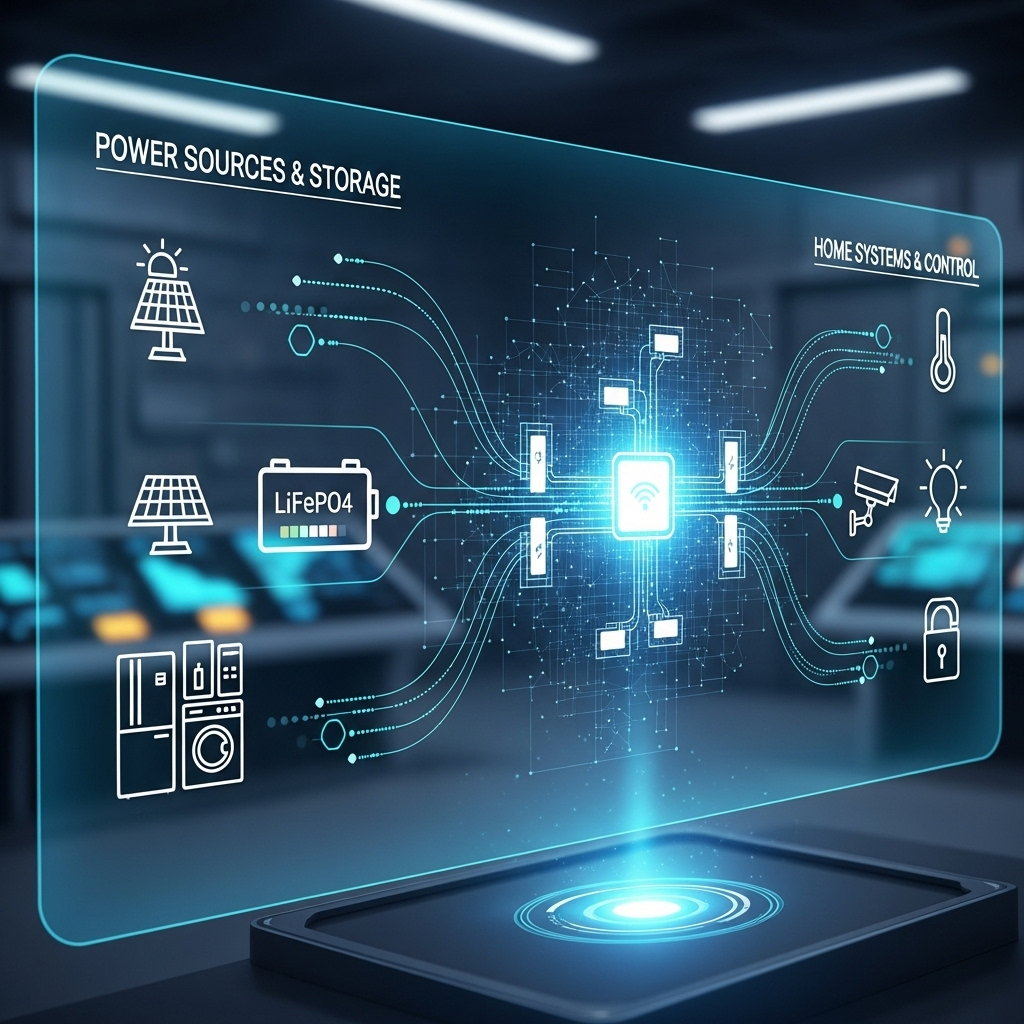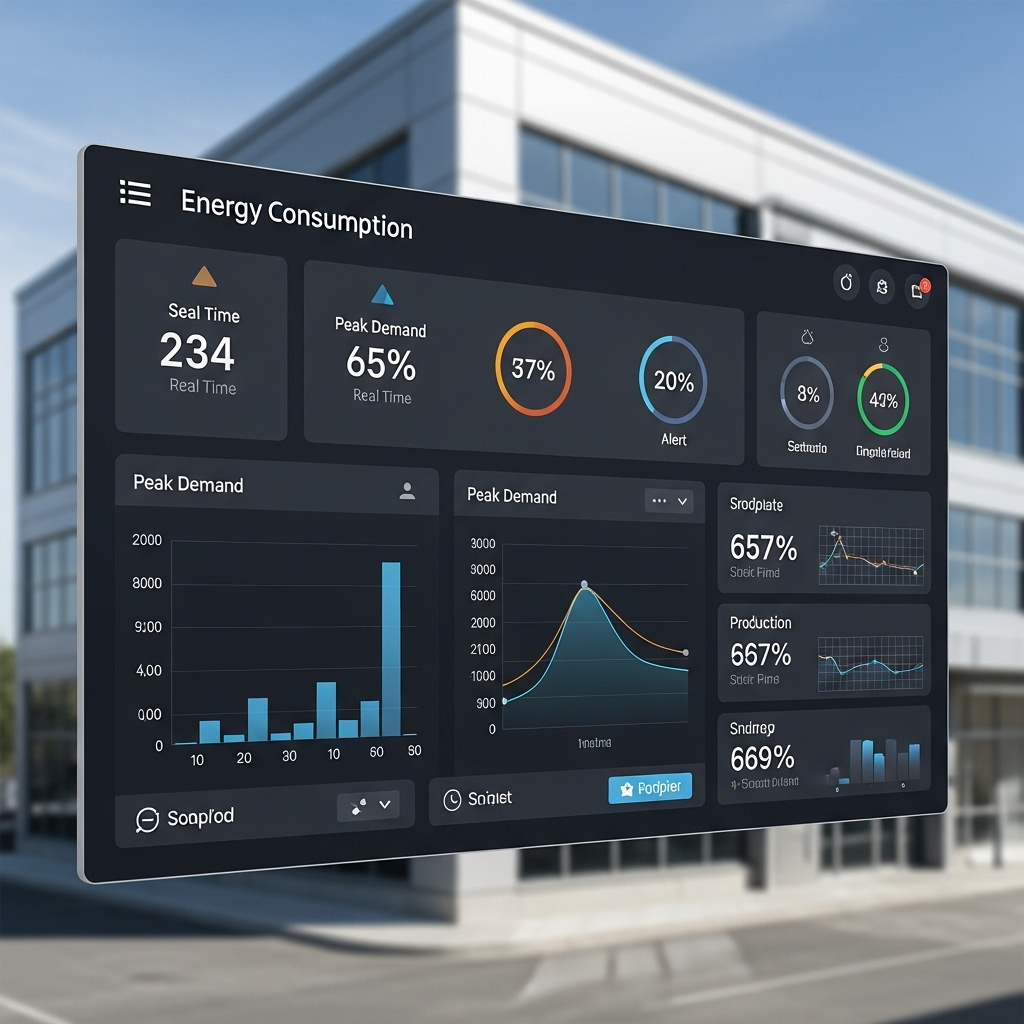Achieving ISO 50001 certification is a significant milestone for any organization committed to energy management. It signals a robust framework for improving energy performance and reducing costs. Yet, the path to compliance is paved with data. For businesses using Energy Storage Systems (ESS), providing consistent, verifiable telemetry for audits can be a major hurdle. Different systems often speak different languages, creating data silos that complicate reporting. This guide provides a clear roadmap to standardize your ESS telemetry, transforming a complex compliance task into a strategic advantage.
Why ISO 50001 Demands Standardized Energy Data
The ISO 50001 standard is not just a checklist; it's a cycle of continuous improvement. At its core is the Plan-Do-Check-Act (PDCA) model, which relies heavily on accurate data to function effectively. Without a common data language, the 'Check' and 'Act' phases become guesswork.
What is ISO 50001?
ISO 50001 is an international standard that provides a framework for establishing an Energy Management System (EnMS). The goal is to help organizations develop a systematic approach to achieving continual improvement of energy performance. This includes enhancing energy efficiency, securing energy sources, and reducing consumption. It does not prescribe specific performance targets but instead provides a structure for setting and achieving your own objectives.
The Role of Data in ISO 50001 Audits
During an ISO 50001 audit, auditors must verify your energy performance claims. They need to see clear evidence of your EnMS in action. This requires access to reliable, consistent, and traceable data. According to a report by the International Energy Agency, directives like the Energy and AI report highlight the growing requirement for large energy users to implement certified energy management systems such as ISO 50001. This shift underscores the need for robust data reporting. Auditors will scrutinize your Energy Performance Indicators (EnPIs) to confirm that your ESS and other assets are contributing to the energy-saving goals you have set.
The ESS Telemetry Challenge
Energy Storage Systems are critical assets for modern energy management, but they also introduce data complexity. Each manufacturer may use a proprietary data format and communication protocol. One system might report State of Charge as a percentage, while another uses kilowatt-hours. This lack of uniformity makes it incredibly difficult to aggregate data for a holistic view of your facility's energy performance. For an ISO 50001 audit, presenting a patchwork of inconsistent data from various systems is often insufficient and can lead to non-compliance.
Building Your Standardized Telemetry Framework
Creating a unified data framework is the most effective way to overcome the telemetry challenge. This involves defining what you measure, how you measure it, and where you store it. This structured approach ensures your data is always audit-ready.
Step 1: Identify Key Performance Indicators (EnPIs) for Your ESS
The first step is to determine which data points are most critical for demonstrating energy performance. These EnPIs will form the backbone of your reporting. For an ESS, these metrics go beyond simple energy consumption. They reveal the system's efficiency and operational health.
| ESS Telemetry Point | Relevance to ISO 50001 | Description |
|---|---|---|
| State of Charge (SoC) | Operational Planning & Efficiency | Measures the current energy level of the battery. Essential for optimizing charge/discharge cycles. |
| Charge/Discharge Power (kW) | Energy Baseline & Performance | Shows the rate at which the ESS is charging or discharging. Key for peak shaving and load shifting analysis. |
| Round-Trip Efficiency (%) | Performance Verification | Calculates the ratio of energy discharged to energy charged. A direct measure of system efficiency. |
| Cycle Count | Asset Health & Longevity | Tracks the number of full charge/discharge cycles. Helps predict performance degradation over time. |
| Grid Interaction (Import/Export) | Energy Consumption Reduction | Monitors energy drawn from or sent to the grid, proving the ESS's role in reducing grid reliance. |
Step 2: Choosing a Data Standardization Model
You do not need to reinvent the wheel. Industry standards like Green Button, designed for energy data sharing, and OpenADR, for automated demand response, offer excellent blueprints. While their primary applications differ, the principle of a common data structure is what matters. You can adopt a similar model to create a consistent internal schema for all your energy assets. This means defining standard units (e.g., all energy in kWh, all power in kW), time-stamping conventions, and data point names. This internal standard acts as a universal translator for your diverse equipment.
Step 3: Implementing a Data Aggregation Platform
With a standard defined, you need a central place to bring it all together. A data aggregation platform, which could be an energy management information system (EMIS) or a data historian, serves this purpose. This software connects to your various ESS units, pulls the raw telemetry, and normalizes it according to your defined standard. This platform becomes the single source of truth for all energy data, eliminating discrepancies and providing a clean, consolidated dataset for auditors.
From Data to Action: Leveraging Telemetry for Compliance and Beyond
Standardized data is more than just a compliance tool. It is a powerful asset for optimizing operations and driving further energy savings. This aligns perfectly with the ISO 50001 philosophy of continuous improvement.
Generating Audit-Ready Reports
With your data aggregated and normalized, generating reports for an ISO 50001 audit becomes a simple, automated process. You can easily create dashboards and documents that show:
- Trends in overall energy consumption over time.
- The specific contribution of the ESS to peak demand reduction.
- Improvements in round-trip efficiency following operational changes.
- Performance against the energy-saving targets set in your EnMS.
Continuous Improvement: The Core of ISO 50001
Standardized telemetry allows you to move from reactive reporting to proactive management. By analyzing trends, you can identify inefficiencies you might otherwise miss. For instance, is your ESS round-trip efficiency declining faster than expected? This could signal a maintenance need. Are your charging cycles aligned with the lowest-cost electricity rates? If not, you can adjust your control strategy. For a deeper look into key metrics like round-trip efficiency and how they impact your system's financial returns, you can review this ultimate reference on solar storage performance. This data-driven approach is the essence of the PDCA cycle.
A Real-World Parallel: Data Centers and Standardization
The data center industry provides a powerful example of this principle in action. As noted by the IEA, Singapore reformed its Green Data Centre Standard to align with the ISO 50001 standard for energy management. This move highlights how high-energy-use sectors are leveraging standardization to manage complex energy profiles and meet regulatory requirements. By adopting a similar strategy for your ESS, you are following a proven path to success.
Wrapping It Up: Your Path to Simplified Audits
Standardizing your ESS telemetry is a foundational step toward mastering your energy management strategy. It transforms the often-dreaded ISO 50001 audit from a frantic data-gathering exercise into a routine validation of your success. By creating a single source of truth, you not only satisfy auditors but also unlock the insights needed to continuously improve your energy performance. This roadmap provides a clear path to turn a compliance requirement into a powerful tool for operational excellence and long-term cost savings. The initial investment in creating a standardized framework pays dividends through simplified audits, enhanced efficiency, and a truly intelligent energy management system.
Disclaimer: This article provides general information and is not a substitute for professional legal or financial advice. Consult with a certified ISO 50001 auditor for specific compliance requirements.
Frequently Asked Questions
What is the main difference between using Green Button and creating a custom telemetry standard for ISO 50001?
Green Button is primarily a standard for utilities to share energy usage data with consumers. While it's a great model for data structure, it's focused on access and sharing. For ISO 50001, you need an internal standard that captures specific operational telemetry from your own assets, like an ESS. Your internal standard can be inspired by Green Button's format but will be tailored to the EnPIs relevant to your audit.
Can I use my ESS manufacturer's software for ISO 50001 audits?
You can, but it presents challenges. If you have ESS units from multiple manufacturers, you will have to manually consolidate data from several different software platforms, each with its own format. This is time-consuming, prone to error, and difficult for auditors to verify. A central aggregation platform that normalizes all data is a more robust and reliable approach.
How does standardizing ESS data help beyond ISO 50001 compliance?
Standardized data is a strategic asset. It enables you to accurately benchmark the performance of different assets, develop advanced control strategies for cost savings (like demand charge management), perform predictive maintenance by tracking performance degradation, and accurately report on sustainability goals for ESG initiatives.
What are the first steps my company should take to standardize its ESS telemetry?
Start with an assessment. Audit your existing ESS and other energy assets to understand what data is available and in what format. Next, define your Key Performance Indicators (EnPIs) based on your ISO 50001 objectives. Finally, design a simple, internal data schema that defines the names, units, and formats for these EnPIs. This plan will guide your technology choices.
Does ISO 50001 mandate a specific data format?
No, ISO 50001 does not mandate a specific data format like Green Button or OpenADR. The standard requires that you have a systematic process for monitoring, measuring, and analyzing your energy performance. The key is that your data must be consistent, accurate, and repeatable, allowing you to demonstrate continuous improvement. Creating your own internal standard is the best way to meet this requirement.





Leave a comment
All comments are moderated before being published.
This site is protected by hCaptcha and the hCaptcha Privacy Policy and Terms of Service apply.